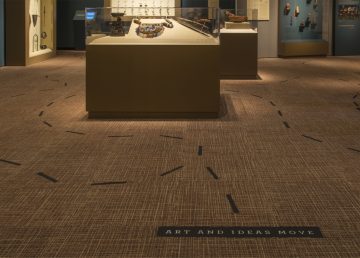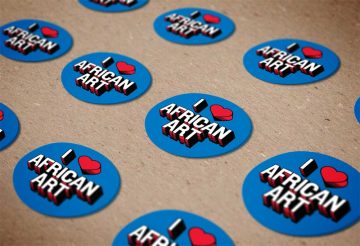Researching provenance—the history of the ownership of a work of art—is an essential part of the National Museum of African Art’s mission. Such research is fundamental to the process by which any work of art, either through gift or purchase, enters the collection. As a part of the Smithsonian Institution and as a global leader in the field of African art history, the National Museum of African Art operates according to the highest legal standards in making determinations about which works to bring in to its collection.
 Those standards have evolved over the course of the museum’s first half century of existence, from its origins as a private museum on Capitol Hill in 1964, to its admission to the Smithsonian in 1979, to the present. The museum is committed to partnering with key stakeholders in furthering this discussion—through its ongoing work and correspondence with museums and other partners on the African continent; its participation in consortia, dialogues, and collaborations with other art and heritage museums and related policy makers around the globe; and its guidance to other U.S. federal institutions in setting policy around Africa’s arts and heritage. The museum also continues to work with colleagues and partners around the Smithsonian Institution to revise and refine the institution’s overall collections policies.
Those standards have evolved over the course of the museum’s first half century of existence, from its origins as a private museum on Capitol Hill in 1964, to its admission to the Smithsonian in 1979, to the present. The museum is committed to partnering with key stakeholders in furthering this discussion—through its ongoing work and correspondence with museums and other partners on the African continent; its participation in consortia, dialogues, and collaborations with other art and heritage museums and related policy makers around the globe; and its guidance to other U.S. federal institutions in setting policy around Africa’s arts and heritage. The museum also continues to work with colleagues and partners around the Smithsonian Institution to revise and refine the institution’s overall collections policies.
The museum’s governing acquisition standards, as laid out in its most recently revised Collections Management Policy (approved 2019) are:
- Acquire works of art that are authentic, reflect the dynamic history of Africa and Africa’s arts, meet the due diligence provenance guidelines of the museum and the Smithsonian, and demonstrate outstanding aesthetic and technical merit.
- Endeavor to build a representative collection, acquiring where possible works of art that expand the geographic, temporal, or thematic range of the collection and are inclusive in terms of gender and diverse identities of the artist, with a priority (revised annually) on filling particular gaps or building depth within the collection.
- Acquire works of art that are desirable for exhibitions that represent a range of contexts, historical periods, iconography, materials, styles, and techniques.
- Ensure that acquisitions are consistent with the museum’s Collections Management Policy and comply with and fully support all legal and ethical standards as set forth in the Smithsonian Institution Policy on Acquisition of Art, Antiquities, Archaeological and Ethnographic Material, and Historic Objects (Appendix B); SD600, Collections Management Policy; and SD103, Standards of Conduct. This includes conducting due diligence research into the provenance of works under consideration to determine that the museum can acquire a valid title to the collection item. Acquisitions should also adhere to the guidelines and principles regarding ethical practices and provenance as outlined by the Smithsonian, American Alliance of Museums (AAM), and Association of Art Museum Directors (AAMD).
The museum’s online collection records reflect the latest and most complete information known to the National Museum of African Art regarding the works in its care. These records are subject to regular update if and when further verified information becomes available.
We do recognize that, for a variety of historical circumstances, such records often remain at least partially incomplete, and that we may not yet have access to as much of these histories as we would prefer. To that end, we invite those with further scholarly or community-based insights into the histories of artworks in our collections not yet accounted for in our records to email us at nmafacurators@si.edu. We will confirm all verifiable leads, update our records, and make determinations about collection works as circumstances dictate.
Our collections are held in trust for the benefit of the global public, and we welcome your assistance in helping us to better understand and share these stories.
